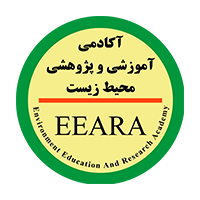Abstract: We investigated the effects of land use planning on reduction of soil erosion rate in the Gharesoo River Basin, Golestan Province, Iran. For this, the Revised Universal Soil Loss Equation (RUSLE) was used in conjunction with Geographic Information System (GIS) to model potential soil erosion. The average potential soil erosion in the river basin was 18.65?t?ha?1?yr?1, with a standard deviation of 33.88?t?ha?1?yr?1. The severe and very severe erosion classes comprised 8% and 4% of the river basin, respectively. We found that all areas with severe and very severe erosion were located in agricultural land. Assessing the impacts of land use and slope confirmed importance of interaction between these factors in increasing soil erosion, especially in agricultural areas with steep slopes. We applied a land use planning to control and reduce soil erosion rate, with a specific focus on agricultural areas. For this purpose, the Multi-Criteria Evaluation (MCE) and Multi-Objective Land Allocation (MOLA) were implemented for agriculture, urban and industrial development, and afforestation. We used the output land use map from MOLA in the RUSLE model. The results showed a significant reduction of average potential soil erosion equal to 25.6% (from 18.65?t?ha?1?yr?1 to 13.86?t?ha?1?yr?1) when the MOLA land use plan was followed. Also, the area impacted by severe and very severe erosion classes were reduced by 25.50% and 42.59%, respectively. The results of this research emphasized that implementation of land use planning in the Gharesoo River Basin is helpful in controlling soil erosion. The method presented in this study can be a basis for sustainable and comprehensive management of river basins.
Keywords: Soil erosion, RUSLE, Land use planning, MCE, MOLA
